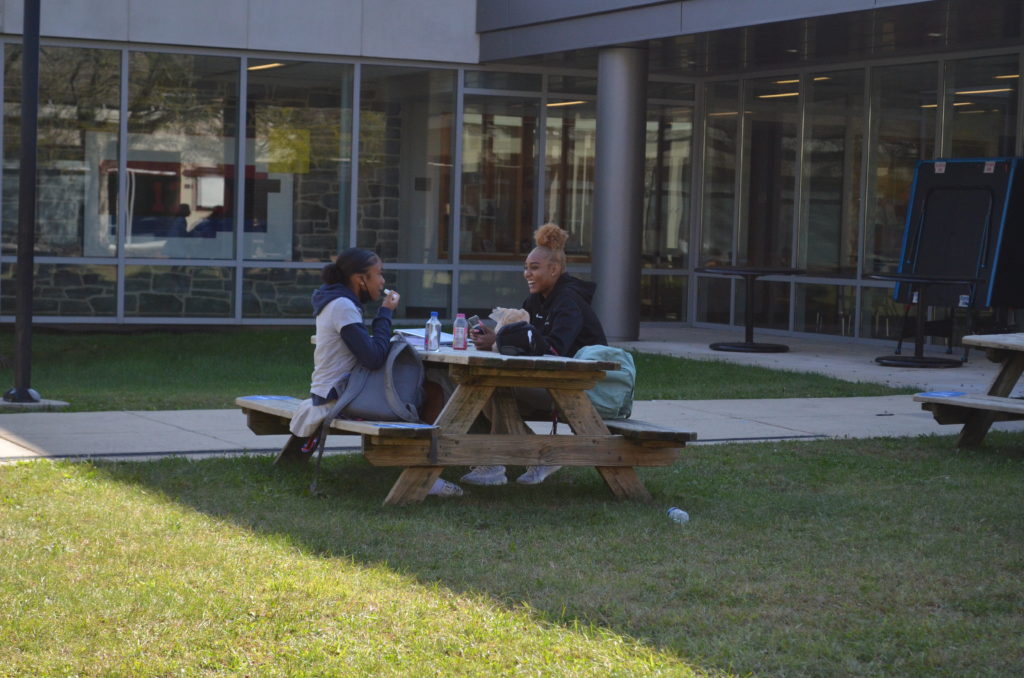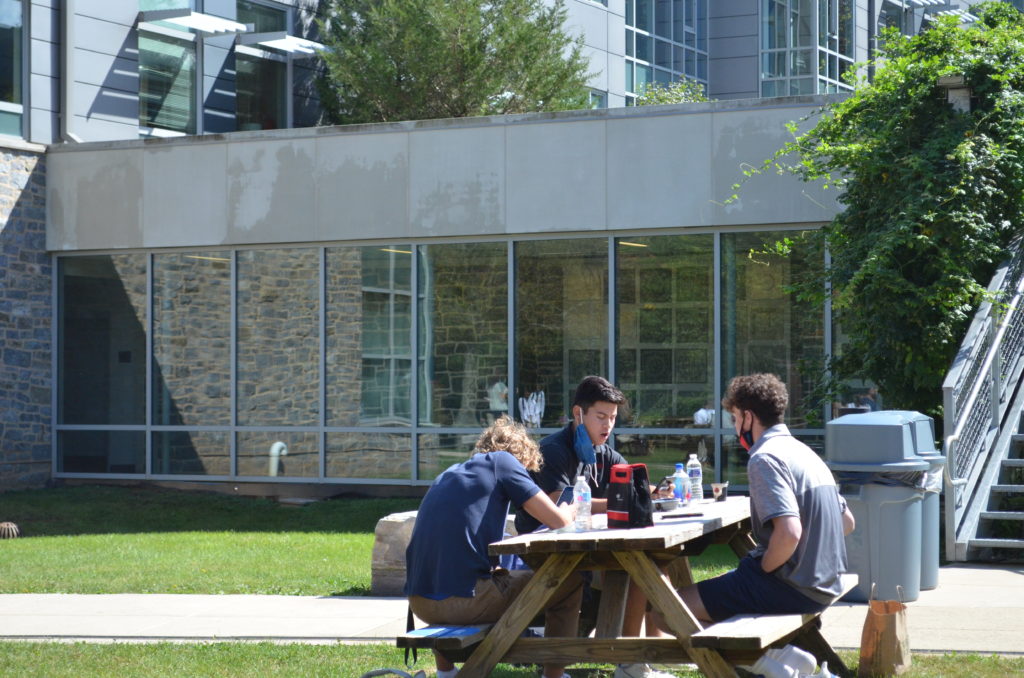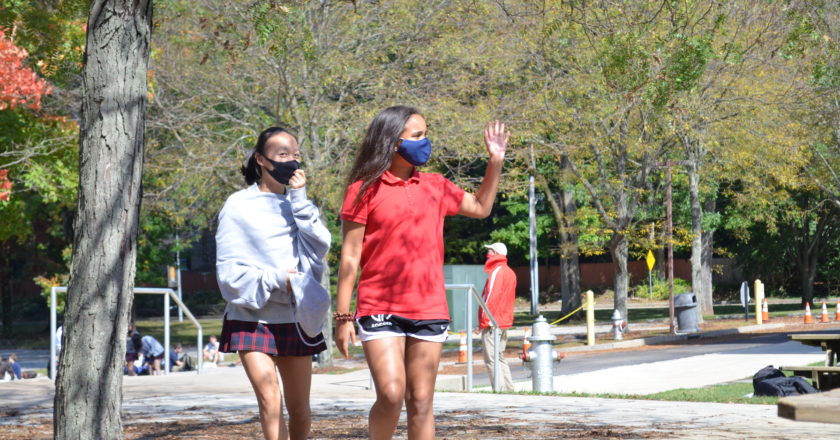After the Upper School made the difficult decision to adapt to a hybrid schedule amid the coronavirus pandemic, GA students and faculty have upheld the responsibility of keeping our community healthy. By following state guidelines, GA has successfully remained open. The hybrid schedule allows students to alternate between learning in the building and remotely via Zoom. Ninth and tenth graders are in the building on blue days, while eleventh and twelfth graders are in the building on red days. Although this was a difficult decision to make, the hybrid schedule ensures that those who would like to be in the building are able to, and those who are not comfortable doing so are able to remain home. Opening in person comes with uncertainty, but the GA students and faculty have been able to adapt to the new schedule and abide by the rules and guidelines to maintain everyone’s safety.
In the new schedule, students alternate between in-person and at home, while the GA faculty and teachers are in person every day (if they feel comfortable) teaching their classes both on Zoom and in person. For some, the hybrid schedule has not been an easy transition. For example, Mrs. Ayers, feels that “It was hard on me to teach virtually, I mean I’m more of a hands on type of person. What’s more hard for me is the hybrid schedule where some kids are home and some kids are in school.”

Moreover, Mr. Moyer says that his reaction to the hybrid from the beginning to now has changed drastically. He “didn’t know how to respond to it in the beginning” because he didn’t know what a hybrid school schedule really meant or would look like. Now, he is more comfortable with the hybrid model and believes it has been successful so far. Lastly, Ms. Tsai stated, “ I was extremely anxious because I do have a child who really needs to be very careful because her health is…more fragile than other people”. She explains, “I [wasn’t] sure what would develop, but after we started for a couple weeks” and “I saw that we work[ed] together to keep each other healthy and safe, I have more confidence.” Although the thought of being in person was originally unsettling, the GA teachers have taken on this uncertainty with a positive outlook.

There are many new safety measures and protocols in place, and teachers and students generally feel like the hybrid system is quite successful. Most of the teachers interviewed agree that the students are doing a good job of adhering to the mask and sanitation guidelines and social distancing outside. Some even refer to GA as being “the model school” for keeping the community healthy for so long. However, the interviewed faculty do believe that there is room for improvement in terms of social distancing. The teachers reached a consensus that there needs to be increased enforcement of social distancing —especially in the halls—since “kids won’t space out.”
For the most part, teachers are more comfortable now with the hybrid system, and they continue to feel this way as long as everyone upholds a “strong sense of self responsibility” by following the guidelines. The teachers also express the need for a “helpful measure of patience” from both students and teachers, as this situation has never happened before. The success of the hybrid system relies on the cooperation of both teachers and students, as teachers are adjusting to new and difficult technology, and students are adjusting to a new schedule and school set-up. For the most part, changes in class curriculum adjusted teachers’ methods of teaching, rather than their content. Mr. Moyer remarked that while some content was cut out, the real change occurred in “planning activities that equally engage students” in person and virtually. The biggest puzzle is finding a method of teaching that doesn’t exclude anyone, and the teachers recognize that this is an ongoing process.
The success of the hybrid system relies on the cooperation of both teachers and students, as teachers are adjusting to new and difficult technology and students are adjusting to a new schedule and school set-up. For the most part, changes in class curriculum adjusted teachers’ methods of teaching rather than their content. Mr. Moyer remarked that while some content was cut out, the real change occurred in “planning activities that equally engage students” in person and virtually. The biggest puzzle is finding a method of teaching that doesn’t exclude anyone, and the teachers recognize that this is an ongoing process
Both the teachers’ criticisms and praises of the hybrid system reveal the level of thought that has to go into making everything work smoothly. Though the system isn’t perfect, the faculty agree that it is quite successful overall, and they are happy to be able to see students in person. There is no doubt that social distancing measures and digital inclusivity are issues that need to be continually improved, but it is still great to achieve some level of normalcy. The general consensus among teachers seems to be that, despite initial nerves about the reopening plan, they are now becoming more comfortable with the situation. As long as students do their part and continue to follow social distancing, mask, and sanitation regulations (in and out of school), we will continue to be successful with the hybrid learning model this year.
Photos by Jordan Robertson ’21

